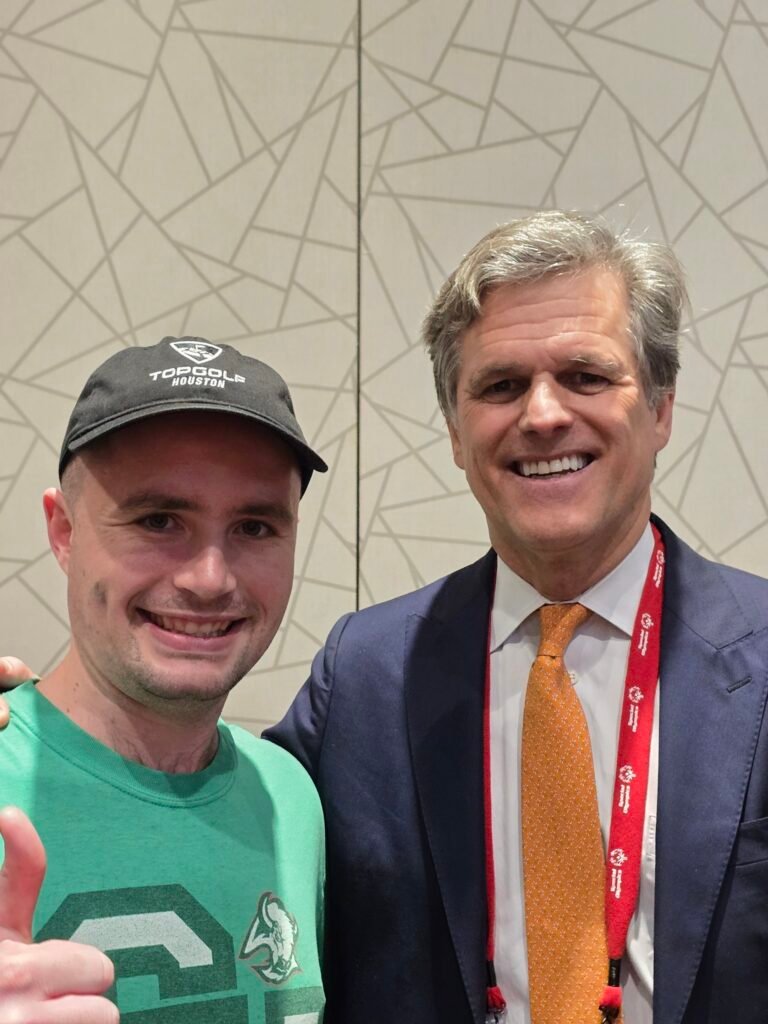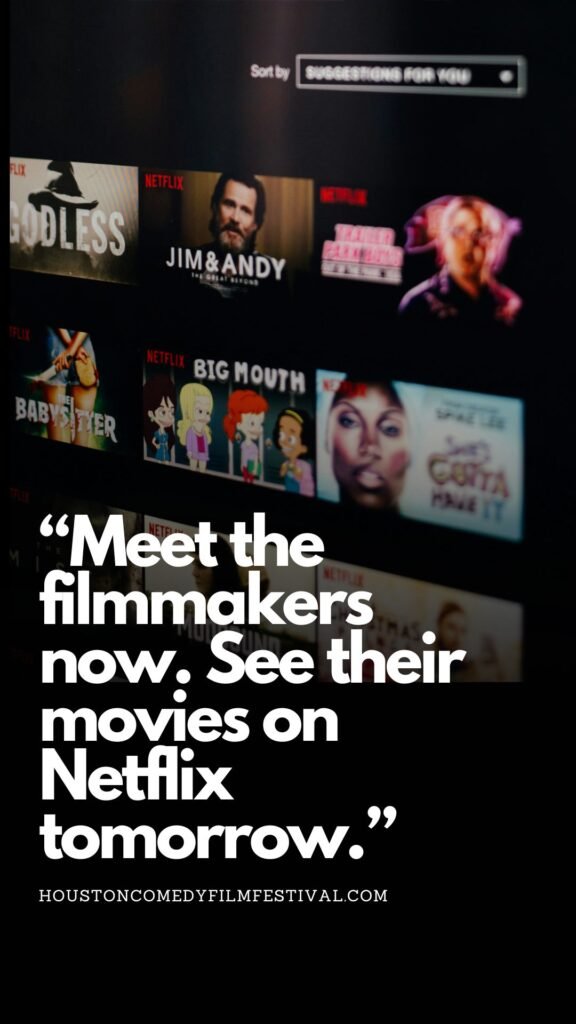News
Blake: Champion for the Next Generation

Blake is more than an athlete—he is an advocate, a mentor, and a beacon of positivity within the Special Olympics Texas community. With a decade of experience playing basketball and soccer, Blake has dedicated himself not only to his own growth but to uplifting those around him.

Inspiring Beginnings
Blake’s journey with Special Olympics began with the desire to help the next generation in a significant way. He is drawn to the joy and camaraderie that define the community, cherishing the chance to socialize, connect, and build lasting relationships. For Blake, being surrounded by happiness and unity is a constant source of motivation.
Words of Wisdom
Blake’s advice to new athletes is heartfelt and empowering:
“Be yourself. Don’t allow yourself to think you can’t do anything. Every athlete has a real purpose on this earth and can make an impact for the next generation.”
He encourages others to recognize their own value and to strive to be a positive force for those who follow.
Overcoming Adversity
Blake’s resilience shines through in his story of overcoming a painful childhood incident, where he suffered a second-degree burn from an attack in sixth grade. Rather than letting this define him, Blake found strength in forgiveness, learning to respond to adversity with compassion and understanding. This experience deepened his belief in the power of love and forgiveness, values he now champions daily.

Advocacy and Leadership
Blake’s proudest moments stem from his advocacy work—most notably, traveling to Washington D.C. to represent and fight for the next generation of athletes. He treasures the opportunity to meet athletes from across the country and is proud to serve as a role model and voice for others.
His biggest supporters, Heather and AJ, have demonstrated true leadership and provided Blake with meaningful opportunities, such as being the keynote speaker at the Breakfast of Champions. These experiences have fueled his passion for advocacy and inspired him to aim for the role of global messenger, where he hopes to amplify opportunities for all athletes.
Life Beyond Sports
Outside of athletics, Blake is a creative spirit. He enjoys writing letters, advocating for increased opportunities, volunteering, and exploring different movie scenes to learn about storytelling and messages. His willingness to learn and build a creative mind is evident in all he does.
The Heart of Special Olympics
For Blake, Special Olympics is a “happy heaven” where everyone belongs and positivity abounds. He finds joy in seeing smiles, fostering unity, and ensuring that every athlete feels valued and included.
Blake’s journey is a testament to the power of perseverance, forgiveness, and advocacy. He is not only an athlete but a true leader, dedicated to making a lasting impact for the next generation.
Join us in bringing the inspiring stories of Special Olympics athletes to the world by supporting our crowdfunding campaign! Your contribution—whether by backing the project, sharing the campaign with your network, or getting involved as a subject, collaborator, or creative team member—will help us celebrate courage, inclusion, and community on a global stage. Every bit of support makes a difference, so if you’re passionate about making an impact, we invite you to be part of this meaningful project and help shine a spotlight on the incredible achievements of Special Olympics athletes.
Entertainment
How The Grinch Became The Richest Christmas Movie Ever

The Grinch didn’t just steal Christmas—he stole the box office. The 2018 animated film The Grinch turned holiday chaos into serious cash, grossing around $540 million worldwide on a modest $75 million budget, making it the highest‑grossing Christmas movie of all time. That is more than seven times its production cost, which is the kind of holiday return every studio dreams about.

Meanwhile, the 2000 live‑action How the Grinch Stole Christmas with Jim Carrey laid the groundwork for this green empire. That version pulled in roughly $345–347 million worldwide on a $123 million budget, turning a prickly Dr. Seuss villain into a perennial box‑office player and a meme‑ready holiday icon. The nostalgia around Carrey’s performance is a big part of why audiences were ready to show up again almost two decades later.
The Money Behind The Mayhem
The 2018 film did not just earn big—it earned smart.
It opened to more than $$67 million domestically in its first weekend and kept playing steadily through November and December, ultimately pulling in about $272 million in the U.S. and roughly $267 million internationally.
Then there is the profit. Trade estimates peg the film’s net profit in the neighborhood of nearly $185 million once theatrical revenue, home entertainment, and TV/streaming deals are baked in. That is before counting years of reruns, licensing, and holiday programming packages—every December, the Grinch gets another quiet deposit while everyone else is wrapping gifts.
Grinch vs. Everyone: Who’s Really On Top?
Here is how the Grinch stacks up against other Christmas heavyweights by worldwide box office:
| Film | Year | Worldwide Gross (approx.) | Notes |
|---|---|---|---|
| The Grinch (animated) | 2018 | $510–540 million | Highest‑grossing Christmas movie ever |
| Home Alone | 1990 | ~$476 million | Longtime champ, now second place |
| How the Grinch Stole Christmas (live‑action) | 2000 | ~$345–347 million | Built the modern Grinch brand |
| The Polar Express | 2004 | ~$315 million | Holiday staple, trails both Grinch movies |
Different sources list slightly different totals, but they all agree: the 2018 Grinch sits at the top of the Christmas money mountain.
Why The Grinch Keeps Printing Money
The secret sauce is that the Grinch is more than a movie—he is a business model. Every version of this character hits a different emotional lane: Jim Carrey’s 2000 Grinch is pure chaotic energy and quotable nostalgia, while the 2018 Grinch is softer, cuter, and perfectly engineered for modern families and global audiences. Together, they keep the character relevant across generations, which is exactly what studios want from an evergreen holiday IP.
On top of box office and home sales, the character feeds theme‑park attractions, holiday events, branded specials, apparel, toys, and seasonal marketing campaigns. The Grinch went from “I hate Christmas” to “I own Christmas,” quietly turning grouchiness into one of the most profitable holiday brands on the planet.
News
US May Completely Cut Income Tax Due to Tariff Revenue

President Donald Trump says the United States might one day get rid of federal income tax because of money the government collects from tariffs on imported goods. Tariffs are extra taxes the U.S. puts on products that come from other countries.

What Trump Is Saying
Trump has said that tariff money could become so large that it might allow the government to cut income taxes “almost completely.” He has also talked about possibly phasing out income tax over the next few years if tariff money keeps going up.
How Taxes Work Now
Right now, the federal government gets much more money from income taxes than from tariffs. Income taxes bring in trillions of dollars each year, while tariffs bring in only a small part of that total. Because of this gap, experts say tariffs would need to grow by many times to replace income tax money.
Questions From Experts
Many economists and tax experts doubt that tariffs alone could pay for the whole federal budget. They warn that very high tariffs could make many imported goods more expensive for shoppers in the United States. This could hit lower- and middle‑income families hardest, because they spend a big share of their money on everyday items.
What Congress Must Do
The president can change some tariffs, but only Congress can change or end the federal income tax. That means any real plan to remove income tax would need new laws passed by both the House of Representatives and the Senate. So far, there is no detailed law or full budget plan on this idea.

What It Means Right Now
For now, Trump’s comments are a proposal, not a change in the law. People and businesses still have to pay federal income tax under the current rules. The debate over using tariffs instead of income taxes is likely to continue among lawmakers, experts, and voters.
News
Mexico Bans Dophin Shows Nationwide

Mexico has approved a nationwide ban on dolphin shows and the use of captive marine mammals in entertainment, making it one of the strongest marine animal protection laws in the world. The reform requires dolphinariums and marine parks across the country to phase out performances, breeding, and swim‑with‑dolphin attractions and to relocate hundreds of dolphins to seaside sanctuaries or sea pens under strict welfare rules.

What the new law does
Mexico’s Congress unanimously reformed the General Wildlife Law to prohibit the use of dolphins and other marine mammals in shows, therapy, tourist attractions, and any activity not directly tied to conservation or strictly regulated scientific research. The text also bans captive breeding for entertainment or tourism, closing a legal loophole that had allowed facilities to replenish and expand their shows.
The ban covers all permanent and traveling venues, ending dolphin performances, orca and sea‑lion shows, and commercial swim‑with‑dolphin programs nationwide. New dolphinariums are forbidden, and “extractive exploitation” of marine mammals is only allowed in limited, non‑commercial conservation or rescue scenarios.
What happens to captive dolphins
Mexico holds an estimated 30 dolphinariums and roughly 350 captive dolphins, making it one of the world’s major markets for dolphin entertainment. Under the reform, these animals cannot be dumped, sold back into the entertainment trade, or killed; instead, they must be transferred to sea pens or seaside sanctuaries and maintained under higher welfare standards for the rest of their lives.
Authorities have up to a year to finalize implementing regulations and up to about 18 months to complete relocation from concrete tanks to more natural marine environments, according to groups monitoring the process. Facilities that fail to comply can face heavy fines in the millions of pesos, along with permit suspensions or closures.
Why “Mincho’s Law” matters
The reform is widely referred to by activists as “Mincho’s Law,” named after a dolphin who was severely injured after crashing onto a concrete surface during a show at a resort in the Riviera Maya. Video of the incident and subsequent reports of other dolphin deaths in the same facility ignited public anger, prompted inspections, and pushed lawmakers to finally act on stalled protections.
Animal‑welfare organizations argue that the law recognizes that keeping highly intelligent, wide‑ranging marine mammals in concrete tanks for tricks and tourist selfies is inherently cruel. They also frame the Mexican decision as part of a global shift away from captive marine mammal entertainment, alongside similar moves in countries such as Canada.

Impact on tourism and industry
The ban will directly affect popular cruise‑ship excursions and resort‑based attractions built around dolphin swims and shows, especially in coastal tourism hubs like Quintana Roo and Baja California Sur. Operators that previously relied on marine mammal performances will have to reinvent their business models, pivot to non‑animal attractions, or shut down entirely.
Tourism and animal‑rights groups expect the move to boost Mexico’s reputation as an ethical destination, even if there is short‑term disruption for businesses tied to the old model. Travel outlets are already advising visitors that dolphin shows and direct‑contact experiences are being phased out and urging them to seek out responsible wildlife viewing instead, such as observing dolphins in the wild.
What this means for animal welfare
For advocates, the law is being celebrated as a historic win that moves more than 350 dolphins out of purely commercial entertainment and toward more natural sea‑based sanctuaries. It also sets a high bar by combining an end to shows, a ban on captive breeding, relocation out of concrete tanks, and strong enforcement mechanisms in a single national framework.
Campaigners now see Mexico as a potential model for other tourist‑heavy countries that still sell dolphin and marine mammal entertainment. They are pushing for transparent timelines, funding, and oversight to ensure the law does not stay symbolic but delivers real, measurable improvements in the lives of the animals affected.

 Entertainment6 days ago
Entertainment6 days agoWicked Sequel Disappoints Fans: Audience Verdict on For Good

 Entertainment3 weeks ago
Entertainment3 weeks agoAfter Party: Festival Winner for Best Romantic Short

 News3 weeks ago
News3 weeks agoCamp Wackapoo – Rise of Glog Takes Center Stage

 News2 weeks ago
News2 weeks agoYolanda Adams Questions Traditional Views on God’s Gender, Audience Reacts

 Entertainment3 weeks ago
Entertainment3 weeks agoFrancisco Ramos Takes Top Mockumentary Award at Houston Comedy Film Festival

 Politics4 weeks ago
Politics4 weeks agoTrump’s $2,000 Tariff Dividend Plan: Who Gets Paid?

 Politics4 weeks ago
Politics4 weeks agoMamdani’s Victory Triggers Nationwide Concern Over New York’s Future

 Film Production4 weeks ago
Film Production4 weeks agoWhy China’s 2-Minute Micro Dramas Are Poised To Take Over The U.S.









































